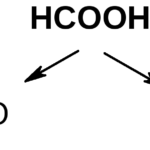SFMCompile is a crucial method for optimizing and combining resources inside Source Filmmaker (SFM). No matter if you’re an absolute beginner or a seasoned animator knowing how to use SFMCompile will significantly improve the workflow of your team, increase the efficiency of rendering, and create smooth animations. In this tutorial, we’ll go over everything you should be aware of SFMCompile starting from setting up to optimization methods, and even how to build with ease!
What is SFMCompile?
SFMCompile is the term used to describe the method of combining and optimizing assets within Source Filmmaker. It could include:
- Compiling models for better performance.
- Making the most of textures and materials in order in order to minimize delay.
- Improved lighting and rendering to create quality animation.
- Debugging and fixing typical SFM problems.
Utilizing SFMCompile effectively, it is possible to make your animations look professional, while also maintaining an environment that is stable.
Setting Up SFMCompile
Before you begin exploring the most advanced techniques, it is important to prepare your workspace in a way that is correct:
1. Install Required Tools
For optimal outcomes, make sure you’ve got these tools
- Source Filmmaker (SFM) – – The most popular animation software.
- Crowbar – A decompiler and compiler for Source engine models.
- VTFEdit – To work with materials and textures.
- NotepadVSC or ++ to edit and control the QC (QuakeC) documents efficiently.
2. Organize Your Assets
- Make sure you keep your textures, models, and animations within an organized organization arrangement.
- Check that all dependencies have been correctly linked so that there are no any missing files.
SFMCompile Optimization Techniques
For a flawless compilation make sure you follow these tips for optimization:
1. Model Compilation & Optimization
- Make use of Crowbar to decompile and compile models.
- Cut down on the number of polygons to achieve more smooth performance.
- Make sure models are correctly set up for improved control over animation.
2. Texture & Material Optimization
- Convert images with high resolution into VTF format by using VTFEdit.
- Reduce the size of your textures in order to speed up the loading time.
- Make sure to optimize materials with normal maps as well as bump maps to achieve better lighting effects.
3. Lighting & Rendering Tweaks
- Make use of volumetric lighting and ambient occlusion in order to make realistic scenes.
- Make adjustments to the quality of reflections and shadows to achieve the perfect balance of the visuals and performance.
- Cut down on unnecessary light sources so that you avoid performance declines.
4. Debugging & Fixing Common Errors
- Model not appearing in SFM? Examine the paths to files and dependencies.
- Are there missing textures? Check that your VMT file correctly references the locations of the textures.
- Are your animations sluggish? Eliminate unnecessary keyframes, and increase the complexity of your scene.
Pro Tips for SFMCompile Efficiency
- Batch Compile Models to speed up your process by creating many assets in one go.
- Utilize models that use LOD (Level of Detail) models. This helps to maintain the performance of complex scenes.
- Make backups of your sources before compiling in order to ensure that you do not lose data.
- Use console commands within SFM to improve debugging capabilities and tuning performance.
Conclusion
Mastering SFMCompile is vital to producing high-quality and optimized animations within Source Filmmaker. By arranging your materials as well as optimizing models and textures as well as fine-tuning the setting for rendering, you will greatly improve your workflow and end product. When you’re working on motion-picture animations or games-inspired sequences These techniques can help create your content like a pro!












